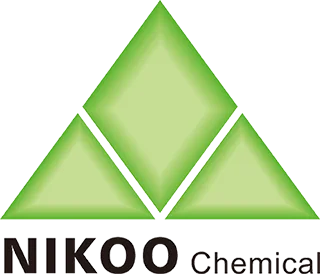Let you know Recombinant Humanized Type XVII Collagen well
1. The Emergence of a Key Biomolecule: What Is rhCol XVII?
Recombinant Humanized Type XVII Collagen (rhCol XVII) represents a breakthrough in regenerative biomaterials. Unlike traditional animal-sourced collagens (types I/III), rhCol XVII is engineered to mimic a human transmembrane protein critical for epidermal-dermal adhesion. It localizes to hemidesmosomes—specialized junctions anchoring basal keratinocytes to the basement membrane—and stabilizes the dermo-epidermal interface by linking intracellular keratin networks to extracellular laminin-332.
Its recombinant production solves two critical limitations of animal collagens:
- Immunogenicity: Animal collagens risk pathogen transmission (e.g., BSE) and immune reactions. RhCol XVII, produced in microbial hosts like yeast, eliminates zoonotic risks.
- Functional Precision: Native XVII collagen is scarce in animal tissues (<0.1% of total collagen), making extraction impractical. Recombinant technology enables scalable production of human-identical sequences.
Clinically, rhCol XVII addresses a massive unmet need. Over 2.5 billion people globally suffer from hair loss, driven partly by COL17A1 degradation—a key trigger for hair follicle miniaturization 69. Current drugs (minoxidil, finasteride) offer limited efficacy and side effects, highlighting demand for novel biologics like rhCol XVII.
The market potential is vast: China’s hair treatment sector alone is projected to reach $30 billion by 2030. RhCol XVII’s emergence marks a shift from symptomatic treatments to biologically targeted interventions.
2. Engineering Breakthroughs: How rhCol XVII Is Produced
Producing bioactive rhCol XVII requires overcoming three historical recombinant collagen challenges: low yield, instability, and purification complexity. Recent advances have transformed this landscape:
1. Molecular Design Optimization:
- Core functional domains (e.g., Gly659-Leu720) were identified as essential for binding integrin α3β1 and laminin-332.
- Tandem Repeat Engineering: Short peptide sequences (e.g., GPPGPPGAMGPPGPPGAPGPAGPAGLPGHQ) are repeated 3–8× to enhance stability and bioactivity. Five repeats maximize hemostatic efficacy.
2. Host System Innovation:
- Yeast Platforms: Pichia pastoris enables eukaryotic post-translational modifications and secretes >90% intact protein, reducing downstream processing.
- Fungal Systems: Trichoderma reesei (FDA-approved food-grade strain) offers high-yield fermentation without endotoxin risks, cutting cooling costs by 40% vs. bacterial systems.
3. Purification & Scalability:
Tag-free purification (ion-exchange chromatography) achieves >99% purity, critical for biomedical use.
Fermentation scales to 28,000L, reducing unit costs by 60% and enabling commercial viability.
Functional validation confirms rhCol XVII retains native bioactivity:
Thermostability: Maintains triple-helical structure at 37°C.
Solubility: Water-soluble for topical/injectable formulations.
These innovations position rhCol XVII for mass deployment in therapeutics and consumer health.
3. Mechanisms of Action: Why rhCol XVII Works
RhCol XVII exerts therapeutic effects through four interconnected biological mechanisms, validated across in vitro and in vivo models:
1. Stem Cell Regulation:
Anchors hair follicle stem cells (HFSCs) via hemidesmosomes, preventing apoptosis under oxidative stress.
Upregulates Wnt/β-catenin signaling—confirmed in AGA mouse models—triggering HFSC proliferation and anagen-phase entry.
2. Anti-Inflammatory & Pro-Healing Actions:
In oral ulcer models, rhCol XVII suppresses TNF-α/IL-6 by >50% and accelerates re-epithelialization via PAR-3/PAR-6 polarity protein activation.
Increases collagen deposition 3-fold and angiogenesis 2.2-fold in rat wound-healing assays.
3. ECM Remodeling:
Binds integrin α3β1 and laminin-332, stabilizing the dermal-epidermal junction. Molecular dynamics simulations show nanoscale binding stability (KD=10⁻⁹ M) .
Resists MMP degradation better than human collagen fragments.
4. Oxidative Defense:
Reduces ROS in UV-irradiated keratinocytes by 70%, mitigating DNA damage and cellular senescence.
Unlike animal collagens, rhCol XVII’s human sequence enables species-matched signaling:
3× greater cell adhesion than bovine collagen.
Activates AKT/TGF-β pathways to promote tissue regeneration without foreign-body reactions.
This multifunctionality supports applications from hair regeneration to chronic wound repair.
4. Current Applications: Where rhCol XVII Delivers Impact
RhCol XVII is transitioning from labs to real-world products, with three domains showing validated efficacy:
1. Hair Regeneration:
- Delivery: Micro-needling (Class II medical device approved) or injectable formulations (under Class III trials).
- Efficacy: In male AGA patients, topical rhCol XVII increased hair density by 33% in 24 weeks vs. 12% for minoxidil 9. Synergy with Type III collagen enhances follicle neogenesis.
- Products: Brands like Jinpo Bio market rhCol XVII serums/scalp injections in China.
2. Dermatology & Wound Care:
Oral Ulcers: Rat models show 50% faster healing vs. controls via anti-inflammatory and pro-angiogenic actions.
Bullous Pemphigoid (BP): Topical rhCol XVII repaired epidermal anchoring in 85% of BP patients in pilot studies (ChiCTR2300070035), reducing infection risk.
3. Anti-Aging Cosmetics:
Fusion Proteins: Coupling rhCol XVII with Xenopus skin repair peptides (via GGGS linkers) boosts moisturization (200% HA synthesis) and collagen I production.
Safety: Dermal tolerance up to 2 mg/mL, outperforming retinoids in irritation profiles.
Market Adoption:
Dermal Fillers: rhCol XVII-based gels improve skin elasticity by 45%.
Ophthalmic Use: As viscosurgical aids in cataract surgery.
Regulatory milestones (e.g., China NMPA approvals) and partnerships (e.g., Damai Micro-needling Hair Transplant × Yuebai Biotech) signal commercial maturation.
5. Future Horizons: The Next Frontier for rhCol XVII
RhCol XVII is poised to transcend current applications through five cutting-edge innovations:
1. "Smart" Biomaterials:
- Stimuli-Responsive Designs: pH/enzyme-cleavable rhCol XVII fusion proteins (e.g., linked to VEGF or BMP-2) enable site-specific drug release in tumors or chronic wounds.
- 3D Bioprinting: As a bioink component, rhCol XVII improves vascular network resolution by 40%—critical for organoids and nerve conduits.
2. Oncology Applications:
Cervical Cancer: rhCol XVII fragments inhibit HeLa cell migration (70% suppression) and invasion via integrin α6β4 disruption, suggesting adjuvant therapy potential.
Skin Cancers: COL17 loss correlates with SCC progression; recombinant forms may restore epidermal barrier function.
3. Neurological Repair:
Preclinical work explores rhCol XVII scaffolds for peripheral nerve gaps, leveraging its laminin-binding capacity to guide axon regrowth.
4. Personalization:
Patient-Specific Variants: CRISPR-edited COL17A1 sequences matching individual HLA profiles could minimize rejection in graft applications.
5. Global Health Integration:
Cost Reduction: Fungal fermentation optimization aims for <$50/g, enabling accessibility in emerging markets.
Sustainability: Animal-free production reduces land/water use by 90% vs. livestock-derived collagen.
Challenges remain—like long-term stability in formulations and scalable GMP—but collaborative initiatives (e.g., Frost & Sullivan-Creation Med whitepaper) are roadmap-ping standards. As rhCol XVII evolves from a replacement protein to an engineered bioactive platform, it promises to redefine regenerative medicine.

